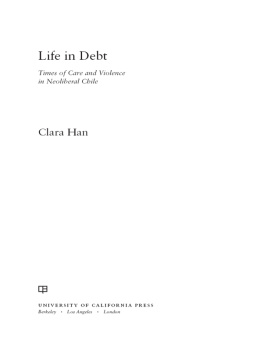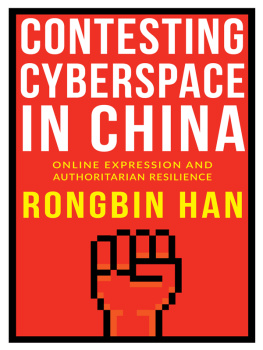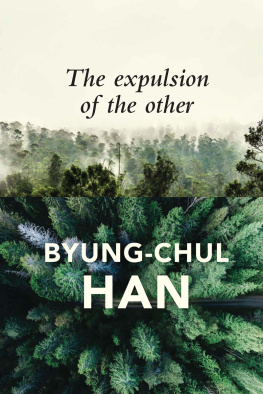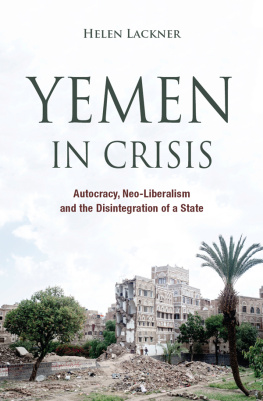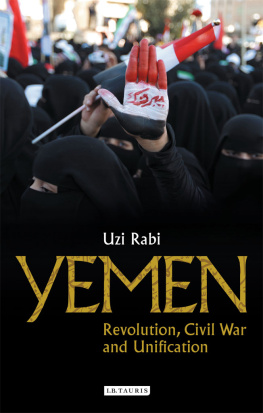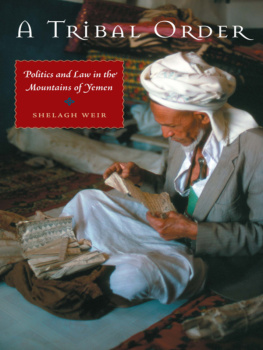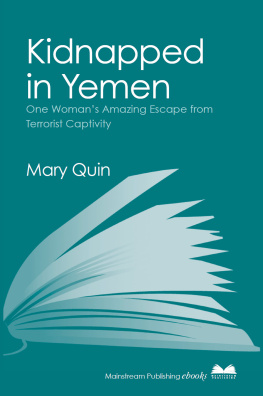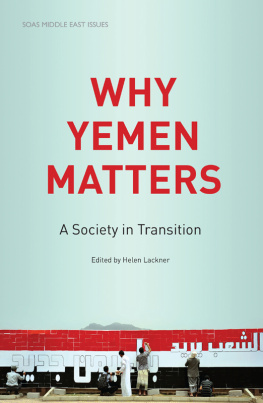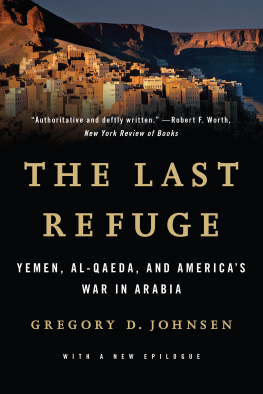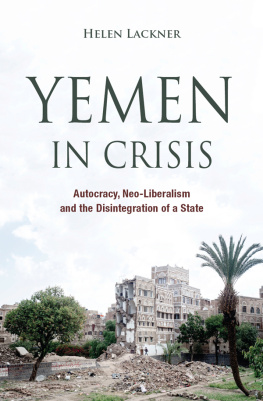WHERE THE PAVED ROAD ENDS
ALSO BY CAROLYN HAN
From the Land of Sheba: Yemeni Folk Tales
RELATED TITLES FROM POTOMAC BOOKS
Simple Gestures: A Cultural Journey into the Middle East
Andrea B. Rugh
Fragments of Grace: My Search for Meaning in the Strife of South Asia
Pamela Constable
High-Value Target: Countering al Qaeda in Yemen
Amb. Edmund J. Hull (Ret.)
WHERE THE PAVED ROAD ENDS
One Womans Extraordinary Experiences in Yemen
CAROLYN HAN

Potomac Books Washington, D.C.
Copyright 2012 by Carolyn Han
Published in the United States by Potomac Books, Inc. All rights reserved. No part of this book may be reproduced in any manner whatsoever without written permission from the publisher, except in the case of brief quotations embodied in critical articles and reviews.
Library of Congress Cataloging-in-Publication Data
Han, Carolyn, 1941
Where the paved road ends : one womans extraordinary experiences in Yemen / Carolyn Han.
p. cm.
ISBN 978-1-59797-725-8 (hardcover : alk. paper)
ISBN 978-1-59797-726-5 (electronic edition)
1. Han, Carolyn, 1941TravelYemen. 2. Women travelersUnited States Biography. 3. Women travelersYemenBiography. 4. YemenDescription and travel. I. Title.
G226.H35A3 2012
915.30453dc23
2012014705
Printed in the United States of America on acid-free paper that meets the American National Standards Institute Z39-48 Standard.
Potomac Books
22841 Quicksilver Drive
Dulles, Virginia 20166
First Edition
10 9 8 7 6 5 4 3 2 1
For Daood and Kamal
Thanks for the memories
Contents
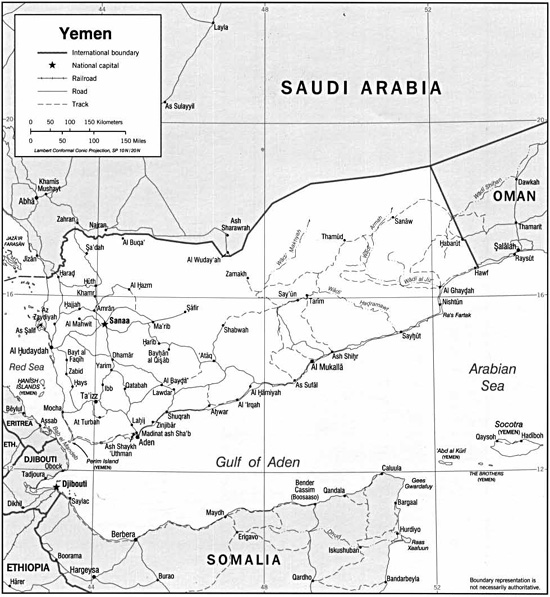
Authors Note
Let the beauty we love be what we do. I am grateful for Rumis words; they have encouraged me to travel uncharted paths. Fate surely created the path to Marib, Yemen, and without question, I followed. Words in the book are merely swirls of dust kicked up as I journeyed over an ancient caravan route, finding pieces of myself, but that was not the plan. I went to teach English. The journey took me to a little-known part of our world, but a place long ago of ancient renown. Answers to unasked questions involved struggles and sacrifices, which I could not have known at the beginning of the journey.
The book is not about Yemen but a thin slice of life within a brief period of time viewed through a narrowly slit window showing the landscape and people of Marib. Watching others, I came face to face with myself. In the desert, I kept notes to make sense of the often-mystifying experience. Otherwise, I might have disappeared. When things got too crazy, I told Mohammed, my bodyguard, that I would write about him. He laughed, believing no one would be interested in reading about him or Yemen. After dusting off my notes, I combined them with remembered moments. Some names are changed for various reasons because it seemed wise.
I am thrilled to welcome you to Marib. Together we can gaze out a small window and, if we are lucky, catch a glimpse of a desert wildcat or camels on the horizon. Or perhaps by looking from the other side, we can discover a new awareness of ourselves.
A Note on Transliteration
I had to make choices about rendering Arabic words into English. In the book, I have used the generally accepted English spellings of Arabic terms. After using an Arabic word, I have explained its meaning. If I was not sure how to render a word, I consulted my Yemeni teachers. I take full responsibility for any errors that may have occurred.
PART I
A FAR-OFF CORNER OF THE WORLD
1
THE JOURNEY
That which we do not confront in ourselves we will meet as fate.
CARL JUNG
In Marib, I disappeared. Although I did not drink a magic potion like Alice in Alices Adventures in Wonderland, I grew smaller and smaller. The desert bleaches bones chalky white, turning them to dust. Sandstorms twist day into night. Winds wear away rock. Raindrops vanish in sand, and like them, one daypoofI was gone.
I had not planned to disappear in Marib. I went to teach English.
Marib was once the famed capital of the Sabaean kingdomthe greatest city-state in all of South Arabiaand home to the legendary Queen of Saba, from which we get the name Sheba. Yemenis refer to the queen as Bilqis, a name of unknown origin. The Bible tells the story of the auspicious meeting of the Queen of Sheba and King Solomon, and the Koran gives a vivid account of the Queen of Sabas travels north delivering gifts of gold, gems, and incense to King Sulaymans court in Jerusalem.
For nearly three thousand years, the retold stories have included romance and mystery as underlying themes, but in part, the meeting between two sensible leaders may have been an economic endeavor for the international distribution of frankincense and myrrh. The Sabaeans controlled the southern portion of the incense route, and King Solomon maintained territories in the north. An alliance would benefit both leaders.
Trade in frankincense and myrrh brought vast riches to Marib. Incense (made from gum resin) was a major commodity essential for religious and secular uses and exported from the southern tip of Arabia. Transported on donkeyback to gathering centers, the incense was later loaded onto camels for winter caravans traveling north to the marketplaces of Petra, Jerusalem, Damascus, Alexandria, Rome, and onward. Used in ancient ceremonies, burning incense carried prayers to the sky gods: sun, moon, and morning star. Pharaonic Egypt required huge quantities of frankincense and myrrh for embalming. Incense was burnt before the Tabernacle, the portable sanctuary in which the Jews carried the Ark of the Covenant. Frankincense perfumed King Solomons couch, as mentioned in Song of Solomon. Gifts to baby Jesus included gold, frankincense, and myrrhtreasures worthy of a king. Incense perfumed clothing and masked odors of an ancient world.
Camel caravans loaded with incense traveled the recognized trade routes, stopping to pay tributes or taxes at important cities. Keeping to well-known routes was necessary for survival. Caravans attempting to avoid Marib or other established sites faced certain death. Stories, of course, traveled with goods on the ancient trading routes, including tales of Maribs fabled Sabaean queen.
Through the ages, legends of the Queen of Sheba have endured. When stories persist, they hold trutha collective memory bankcreating possibilities. Retold stories help overcome the transitory quality of life by providing continuity. They allow us to kick dust along ancient footpaths, listen to music of camels bells, smell incense and spices in marketplaces, experience wonders of the world, and perhaps, if we are lucky, taste forbidden fruit. Stories act as mapsconnecting us to the past, helping us find our way in the present, and guiding us into the future. They tell us everything if we are still and willing to listen.
Like the Queen of Sheba, heroes in stories often leave places of comfort and venture into the unknown. Life presents travelers with at least two paths. One way appears easy and secure. The other looks difficult and uncertain, but the risky path may lead to hidden truths. As heroes in our own stories when faced with situations we never dreamed possible, we must confront ourselves. This takes courage because ten thousand distractions lurk along the way. Pressured by unseen forces, we need to take a hard look and have faith that our intuition is directing us to become whom we are destined to be. We must quiet ourselves enough to listen. Listen and leap.
Next page

